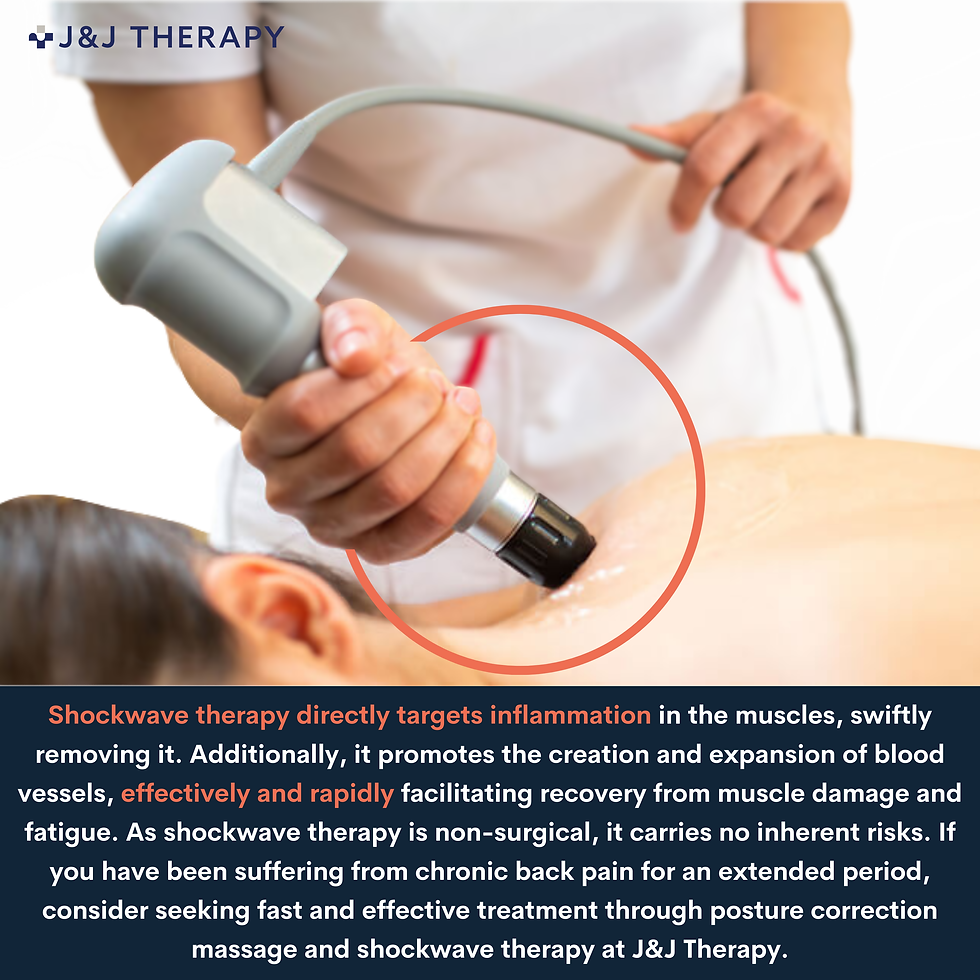Rhomboid Muscle Pain: Why Your Mid‑Back Feels Stiff & Drains Your Energy
- 지수 이
- Jul 15
- 1 min read
Updated: Aug 11









Meet the Rhomboids — Your Scapula “Seat‑Belts”
Running from the spine to each shoulder blade, the rhomboid pair stabilises the scapula every time you pull, row or sit tall. When posture slumps, the blades drift apart and these muscles are forced to work overtime in a lengthened position.
Typical Warning Signs
Dull, burning ache between the shoulder blades after computer work
Back tires quickly when standing or driving
Simultaneous neck or shoulder stiffness
A satisfying “crunch” when you foam‑roll the upper back
What’s Happening Inside?
A chronically overstretched rhomboid can’t pump out metabolic waste. Fatigue chemicals pool, micro‑tears appear and low‑grade inflammation develops. Unless posture is corrected, the cycle repeats and the muscle never truly recovers.
Evidence‑Based Solutions at J & J Therapy, London
Goal | Most Appropriate Option |
Calm inflammation | Focused Shockwave Therapy plus gentle corrective massage |
Remove spasm & pain | Electrical therapy (TENS/IFC), therapeutic ultrasound |
Fix the root cause | Posture‑correction coaching and rhomboid‑strengthening exercise plan |
Improve drainage | Manual lymphatic massage for stubborn swelling |
💡 Clinical data show shockwave therapy cuts muscular inflammation by up to 60 % within three sessions when combined with targeted strengthening.
| Home Care in Two Minutes
Prone “T” raises — 2 sets × 12 reps to wake up sleepy rhomboids.
Pec doorway stretch — 30 s × 3 to open the chest.
Desk reset — monitor at eye level, elbows under shoulders.
Hydrate: 250 ml of water every hour you’re at the screen.
Ready to unload your mid‑back? Book online at JJTHERAPY365.com or WhatsApp 07882 943 540 for a personalised session.



Comments